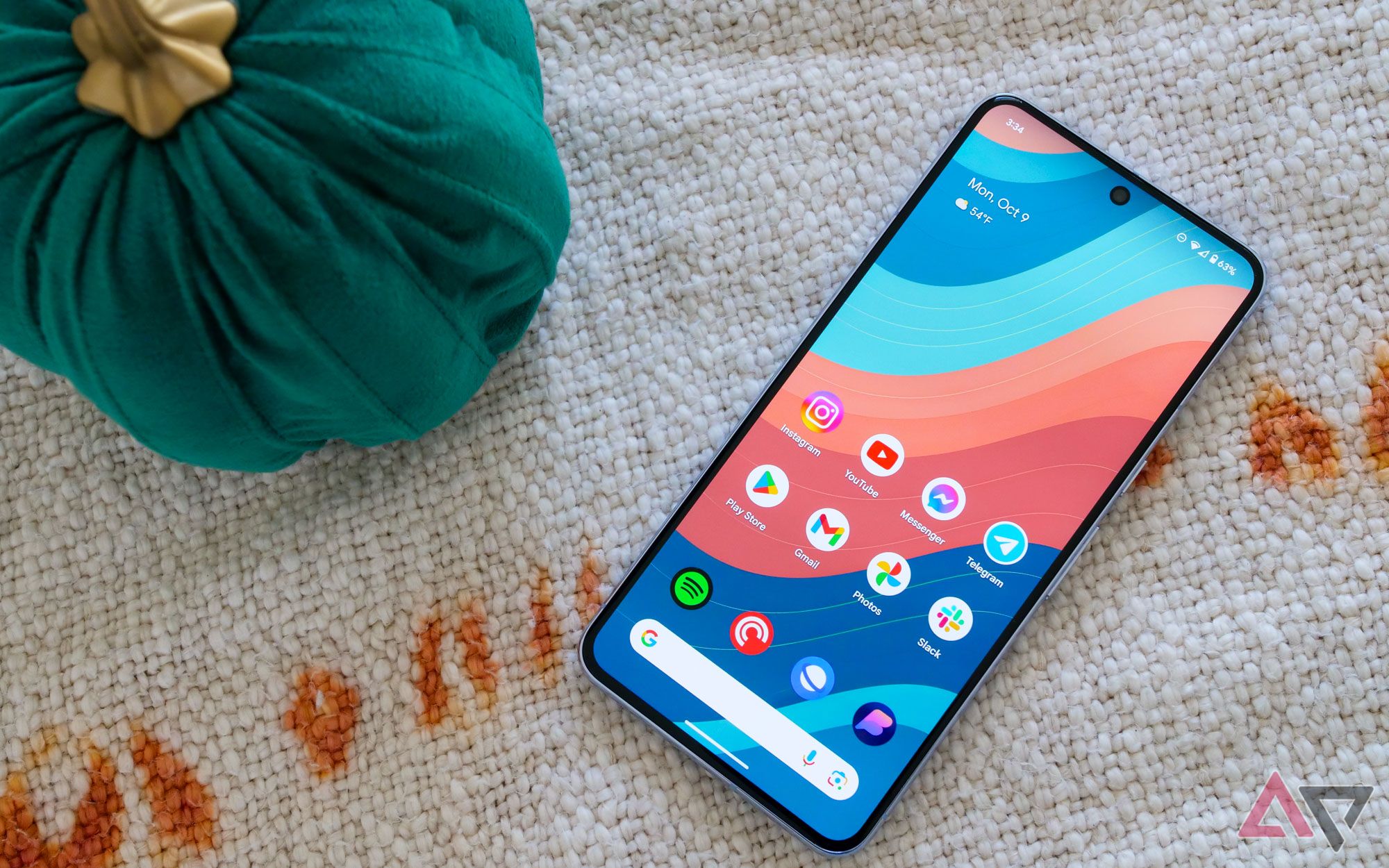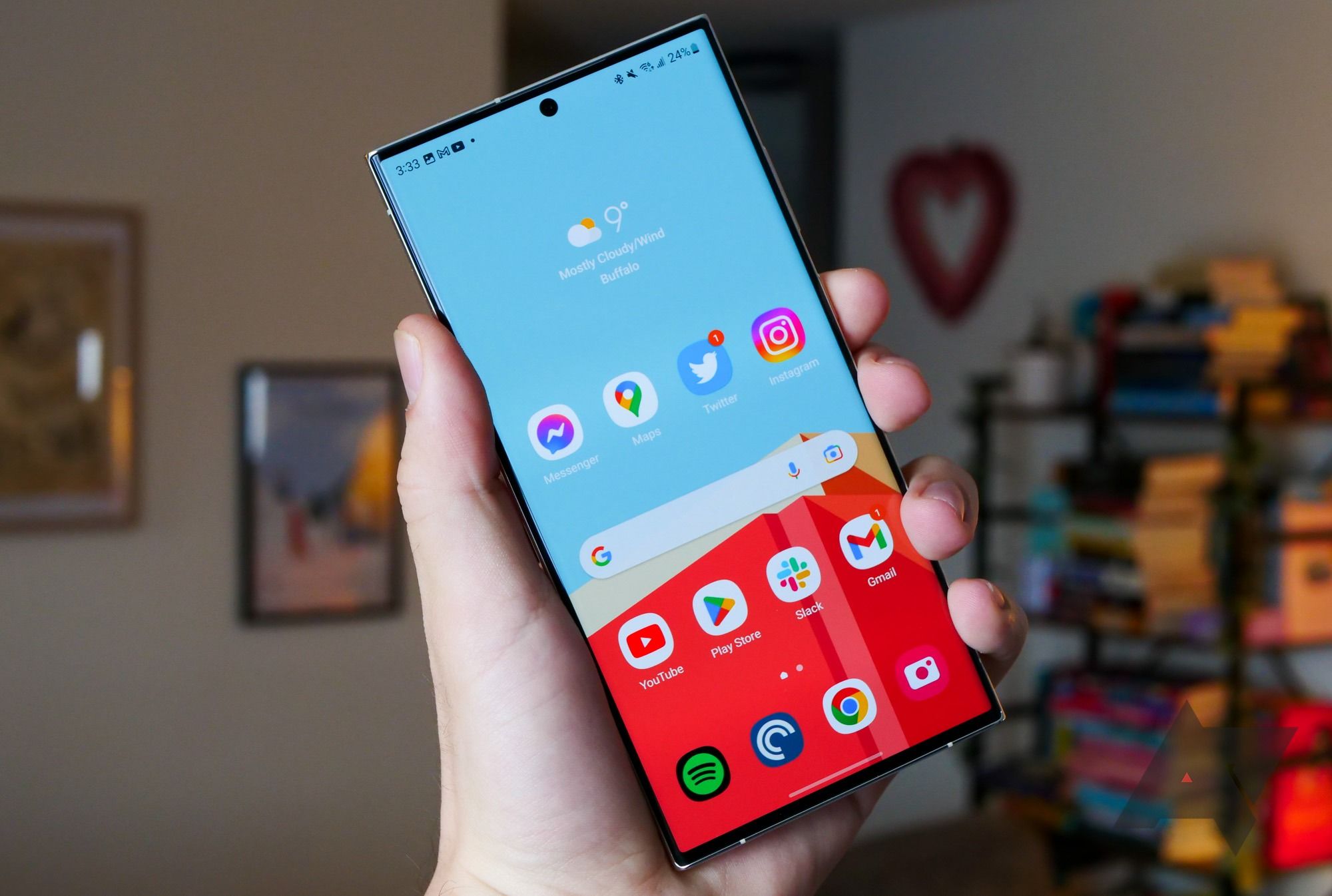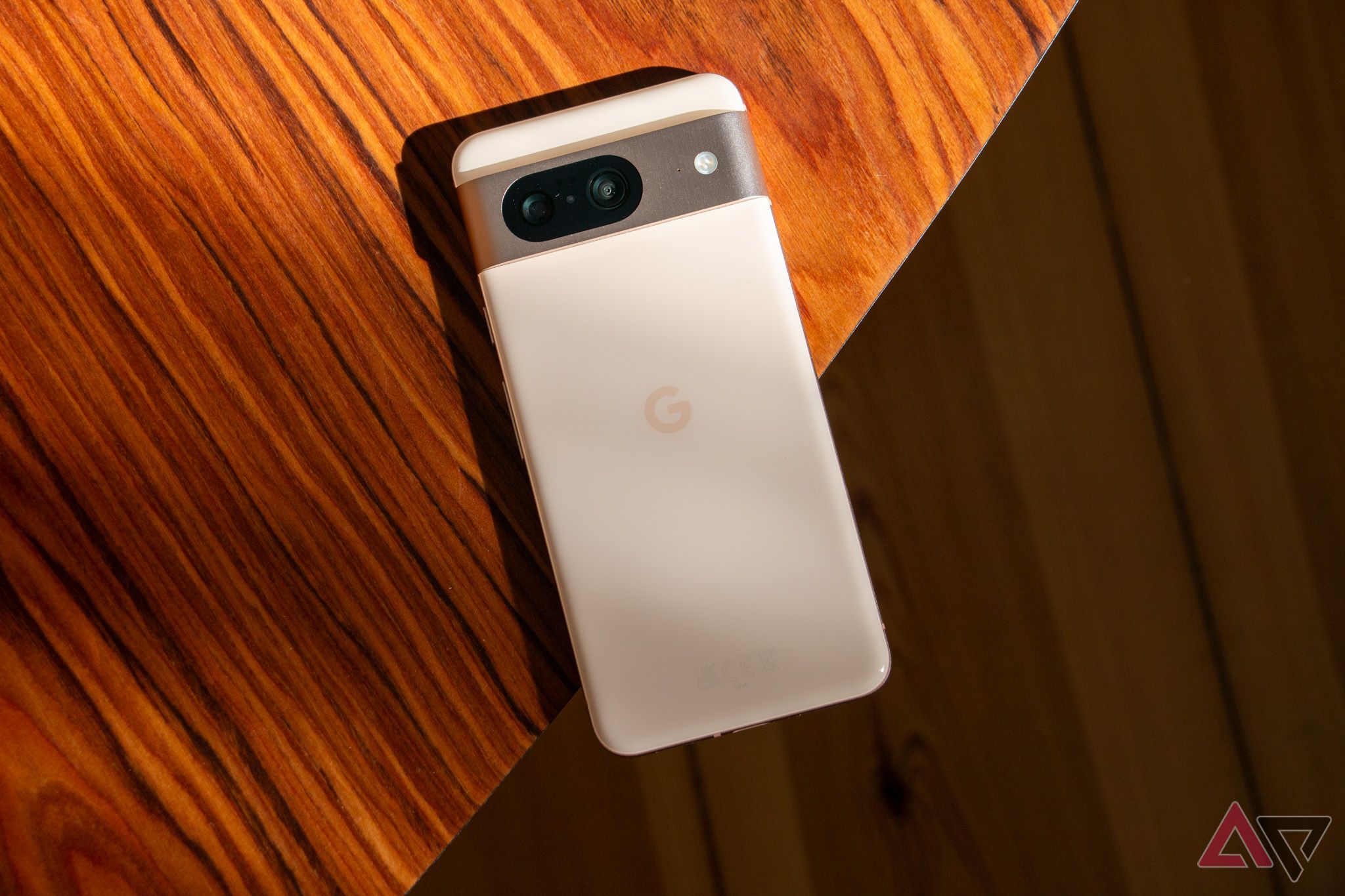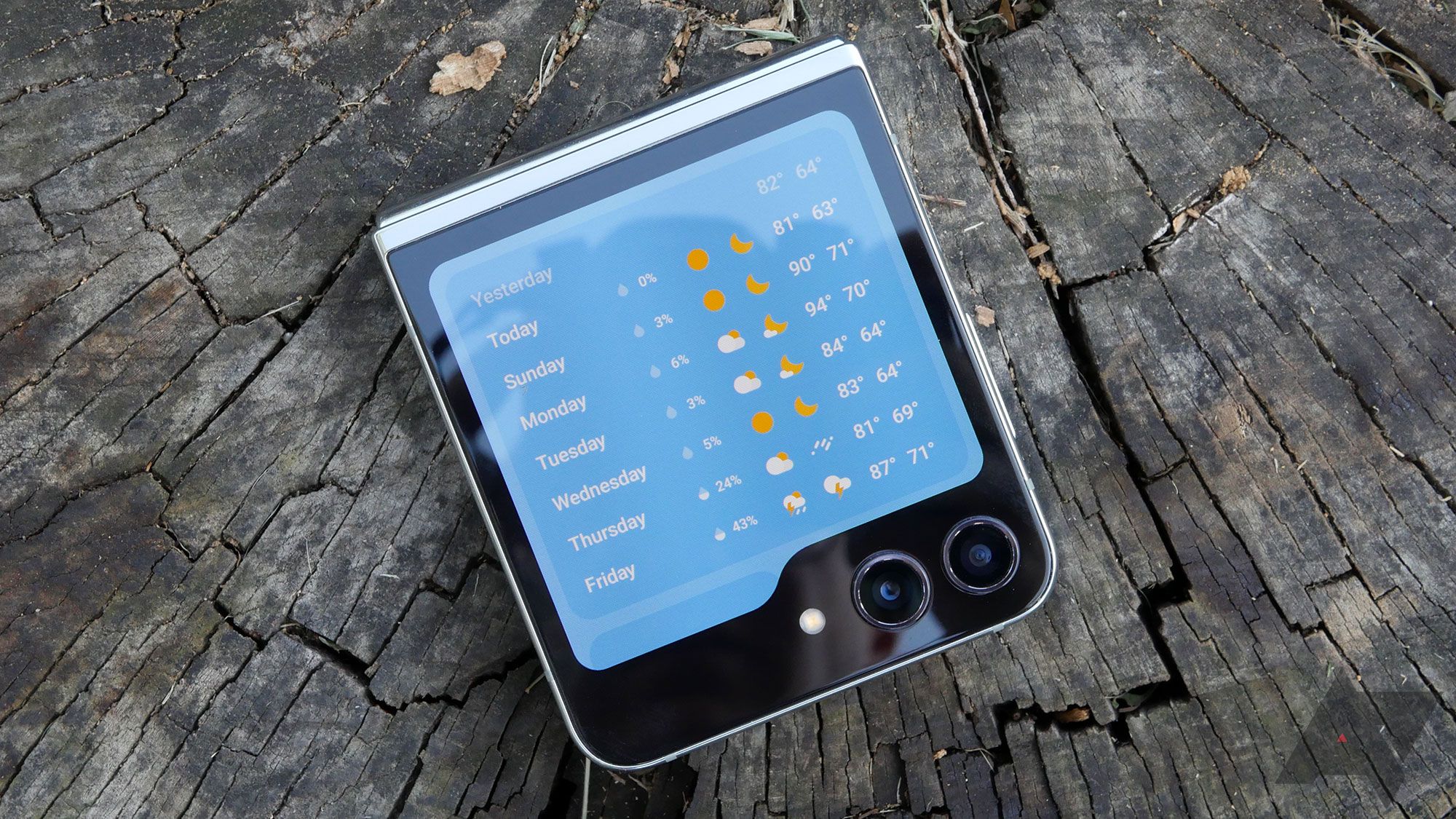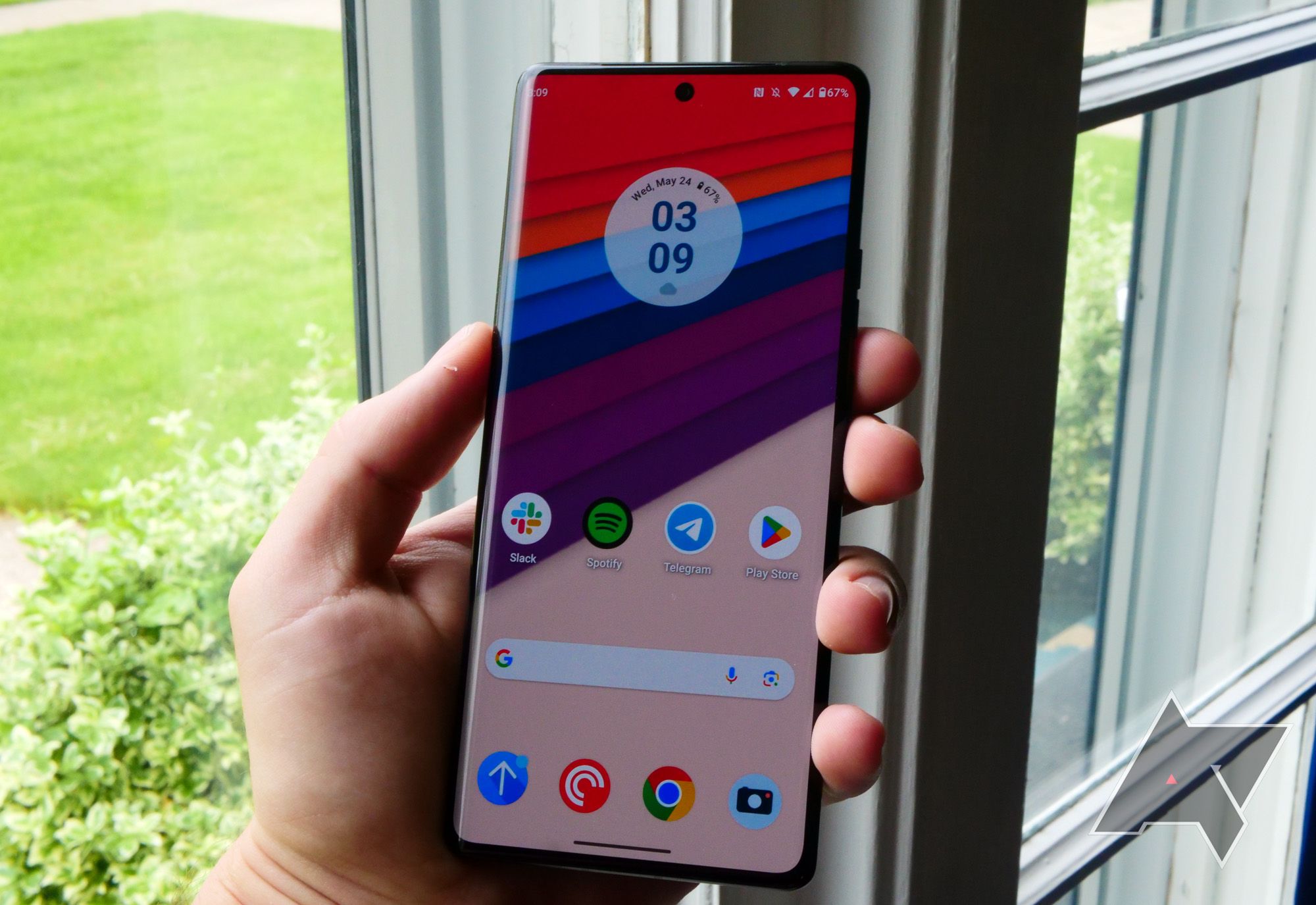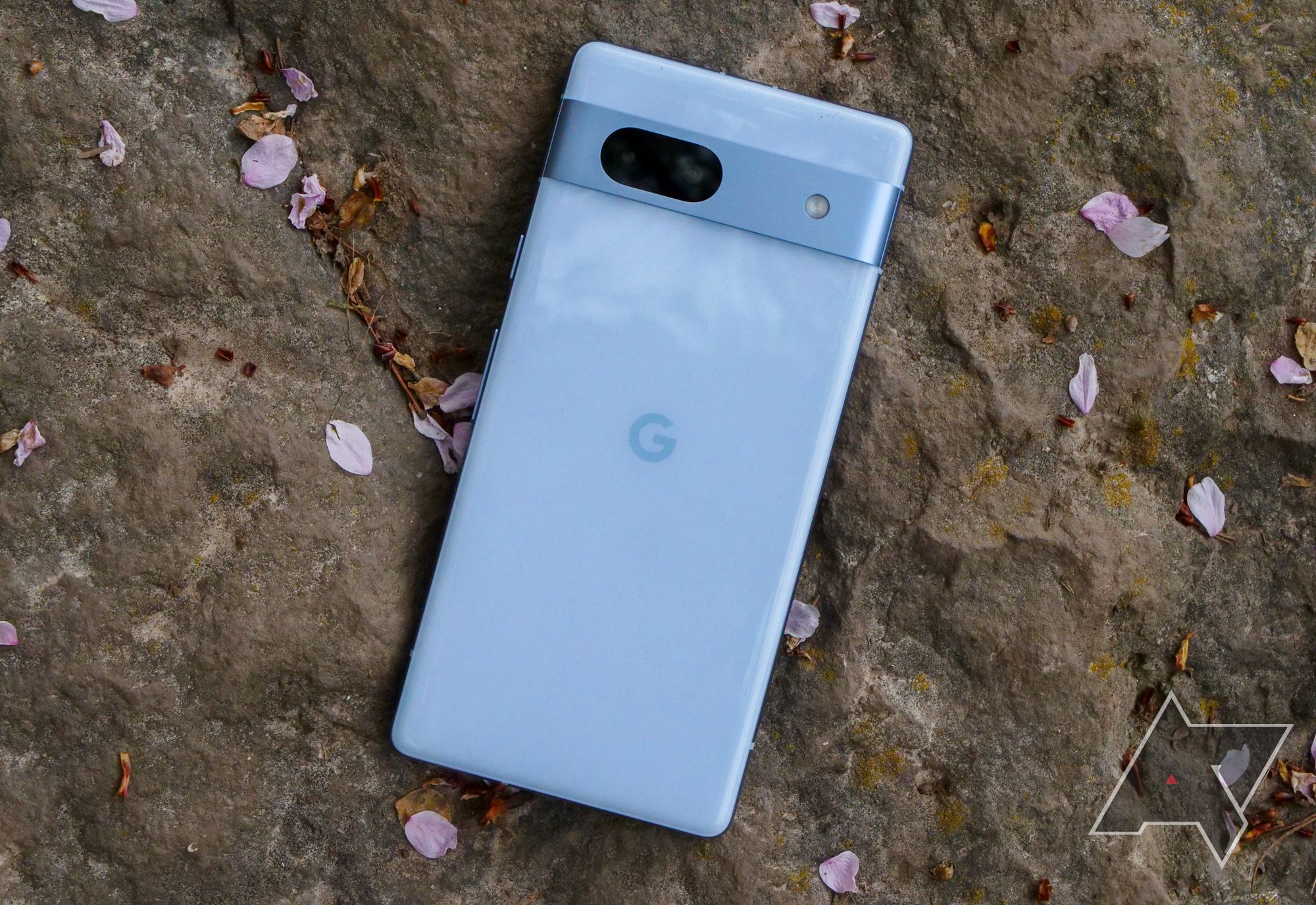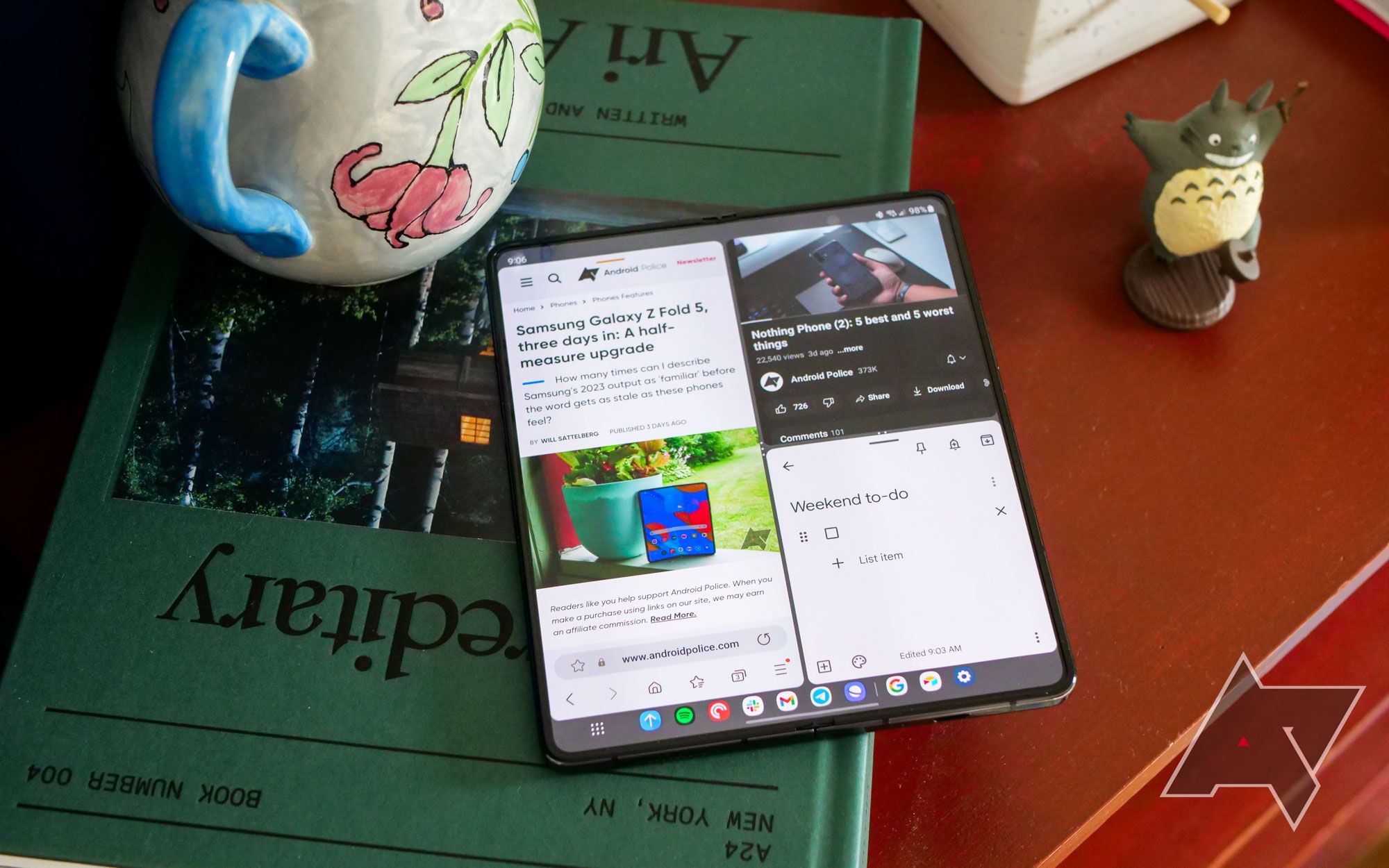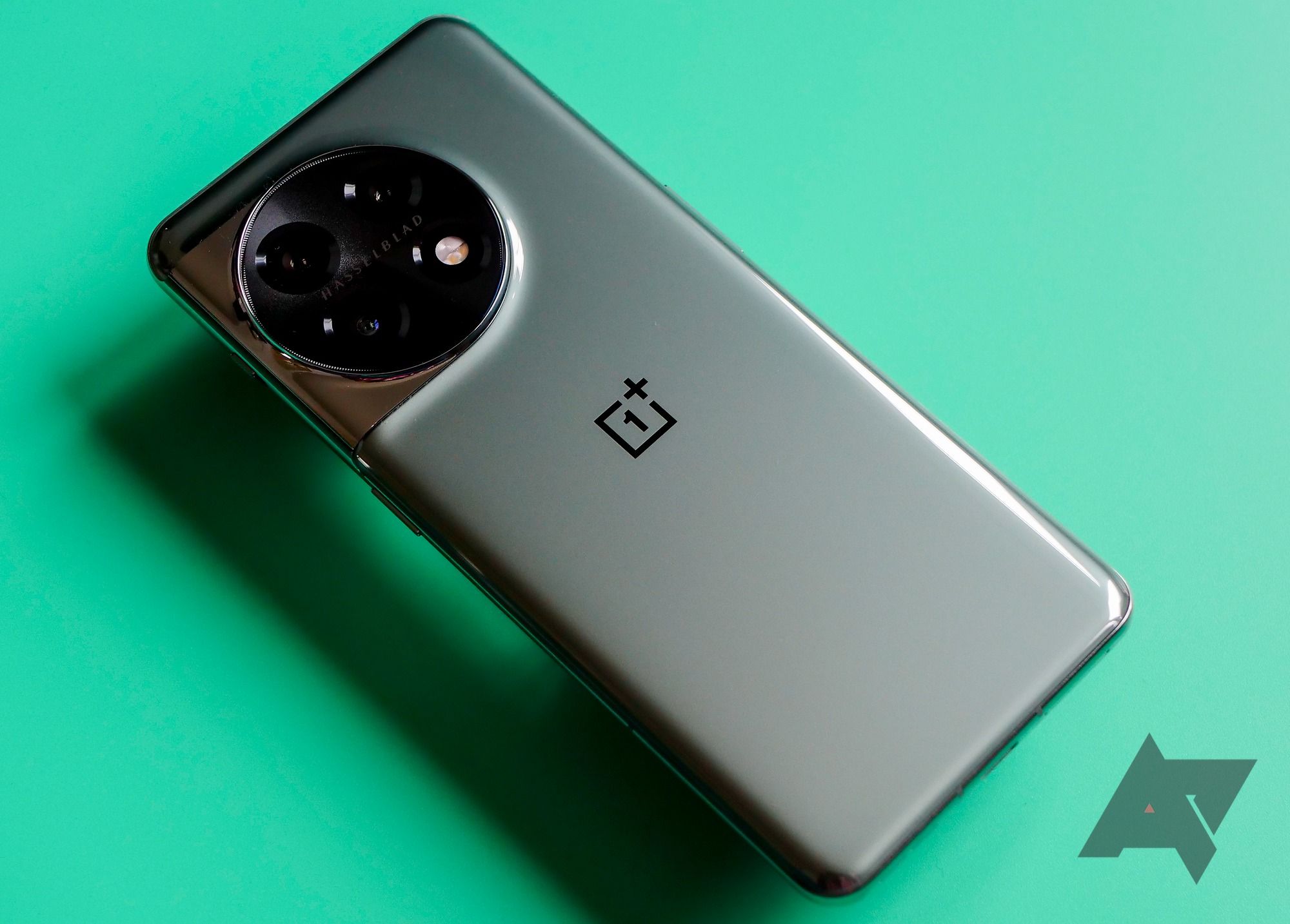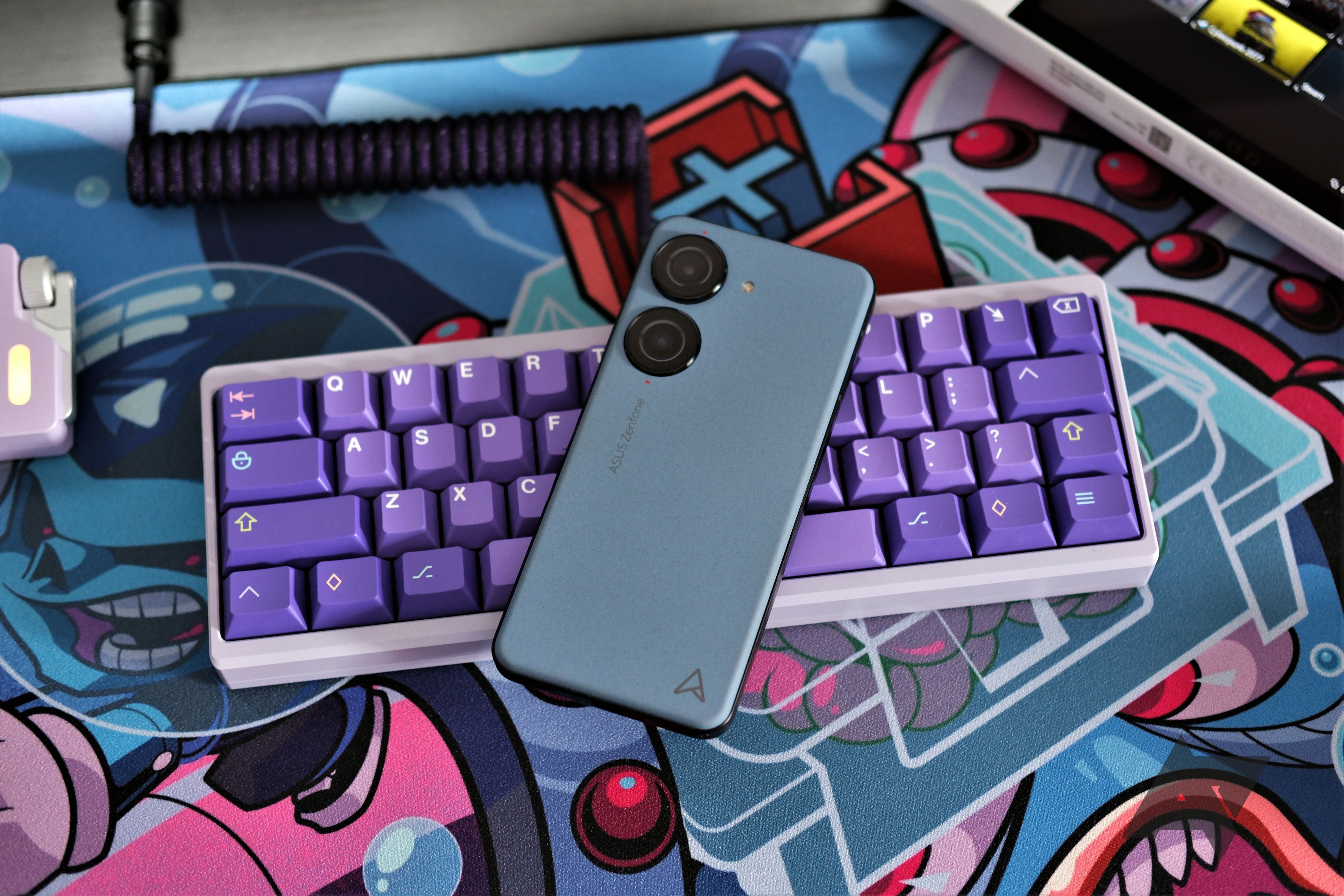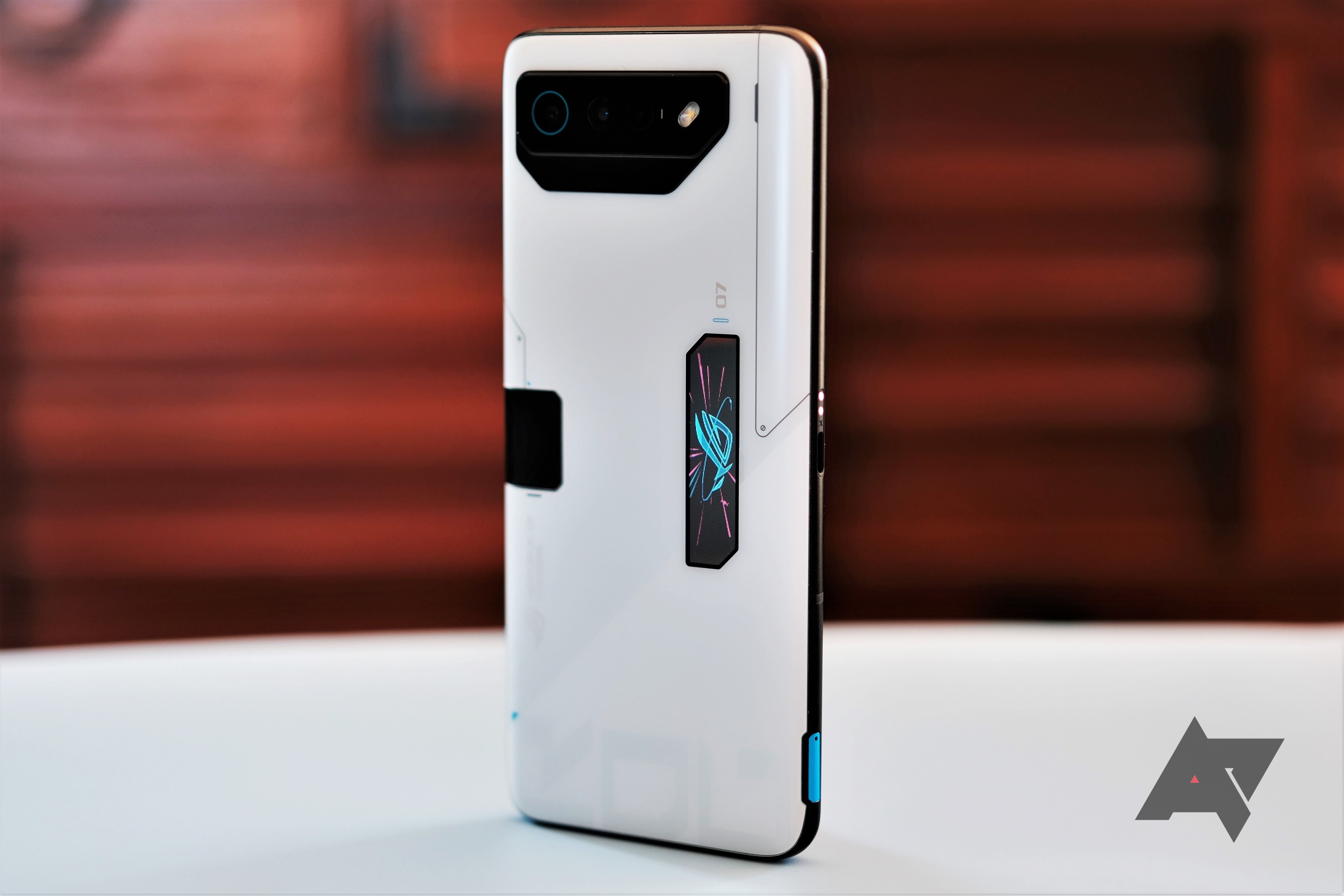When it's time to buy a new smartphone, everyone has different wants and needs. Thankfully, Android has a lot of smartphones that come in all sizes, prices, specs, and even shapes. From foldable phones with the latest Snapdragon chip and some of the best budget phones of the year that balance power and price, to devices guaranteed to get the latest version of Android before everything else, there's a phone on this list for you.
As we rapidly approach the end of the year, it's time to look at what makes the best Android phone you can buy today. So whether you're after a capable, AI-powered flagship, a foldable capable of taking your productivity to the next level, or a small smartphone that still fits in your pocket, here's what you should buy when you're ready for an upgrade.
Your next daily carry should be one of the best Android phones
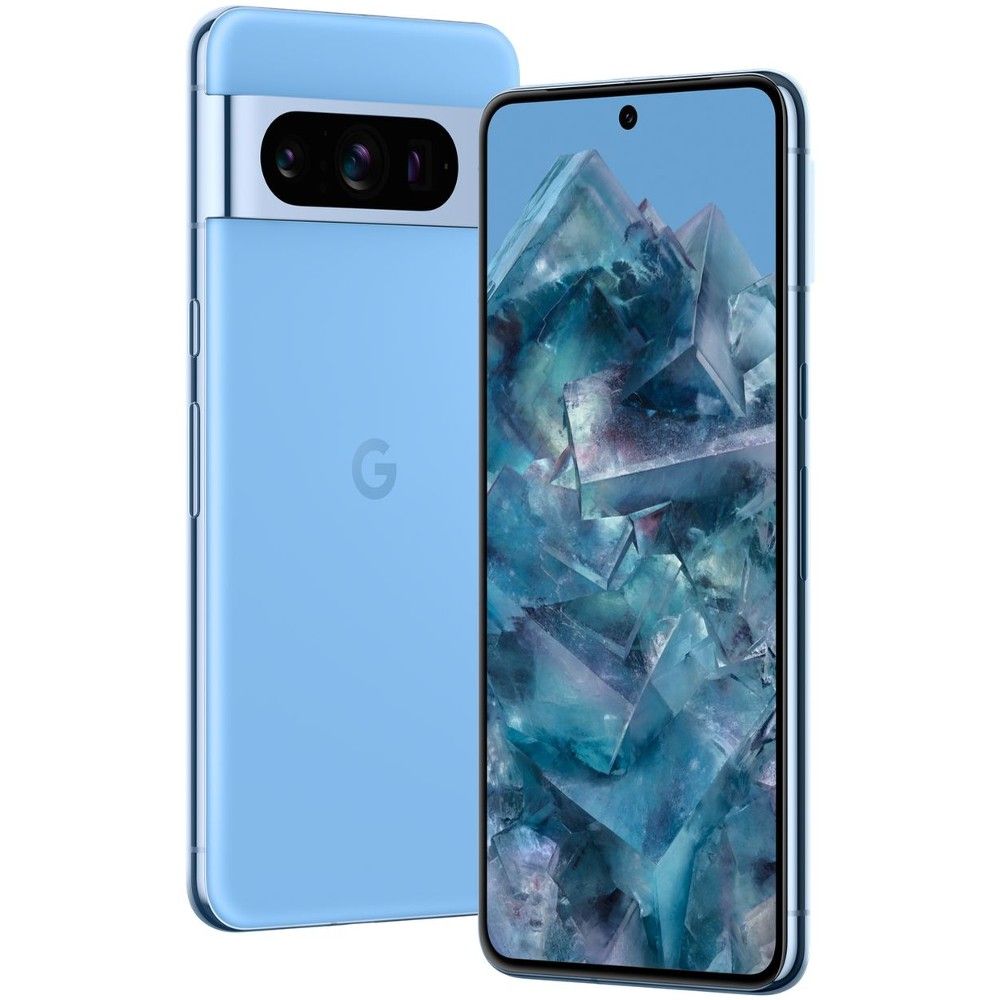
Google Pixel 8 Pro
The premium phone for everyone
The Pixel 8 Pro is a bigger jump than its similar design would leave you to believe. From the matte glass back and flat-edged display to the improvements to the camera lineup, there's plenty of space where this phone shines. But the real improvements are found in the software. Google is all-in on AI enhancements to their apps, and it's really starting in full-force with this device.
- Improved design
- Better performance and battery life than last-gen
- Seven years of OS updates
- Plenty of features "coming soon"
- This phone can still get toasty
- More expensive than the last two generations
Another year, another Pixel graces the top of our best Android phones list. But unlike in previous years, where buyers might have to compromise on certain hardware elements to get the best of Google's software, the Pixel 8 Pro is a phenomenal piece of technology. It improves on the Pixel 7 Pro in nearly every way, all while keeping the same core design that has become so immediately identifiable.
From the newly matte glass to the flat edges surrounding the display, the Pixel 8 Pro feels better in your hand in nearly every way — and the blue variant in particular looks absolutely stunning. It keeps the same 6.7-inch display size as the previous model, but thanks to Google's new Super Actua display, it's brighter than ever before, something you'll immediately notice once you step outside. And as you look closer, the improvements keep coming. Everything from improved facial unlock to true 30W charging help make this a better device than its predecessor.
Under the hood, Tensor G3 takes a big step forward, staying (relatively) cool under pressure while supplying better battery life. It's not like Google has leapfrogged over its Qualcomm-branded competition here — the phone is still warmer on average than its Snapdragon counterparts — but it's a big improvement nonetheless. It also allows for all sorts of AI-powered tricks that, frankly, are too numerous to share in-depth in this particular buyer's guide. From custom wallpapers to removing background noise in videos to making the Photoshopped images of your dreams nightmares, the software experience here is as complex as it's ever been.
Of course, we'd be remiss if we didn't mention the cameras. From the main sensor to the 5x periscope lens, everything is new this year, with all three sensors allowing for more light than ever before. Google is also capturing images in ultra HDR, which can make for some truly jaw-dropping shots. Unfortunately, all of this tech comes with a price hike, as the Pixel 8 Pro now starts at a whopping $1,000 for the 128GB model. In our eyes, it's worth that much to experience the best Android has to offer, but thankfully, the cheaper Pixel 8 still looks to provide an affordable gadget while slashing a third of the price off the tag.
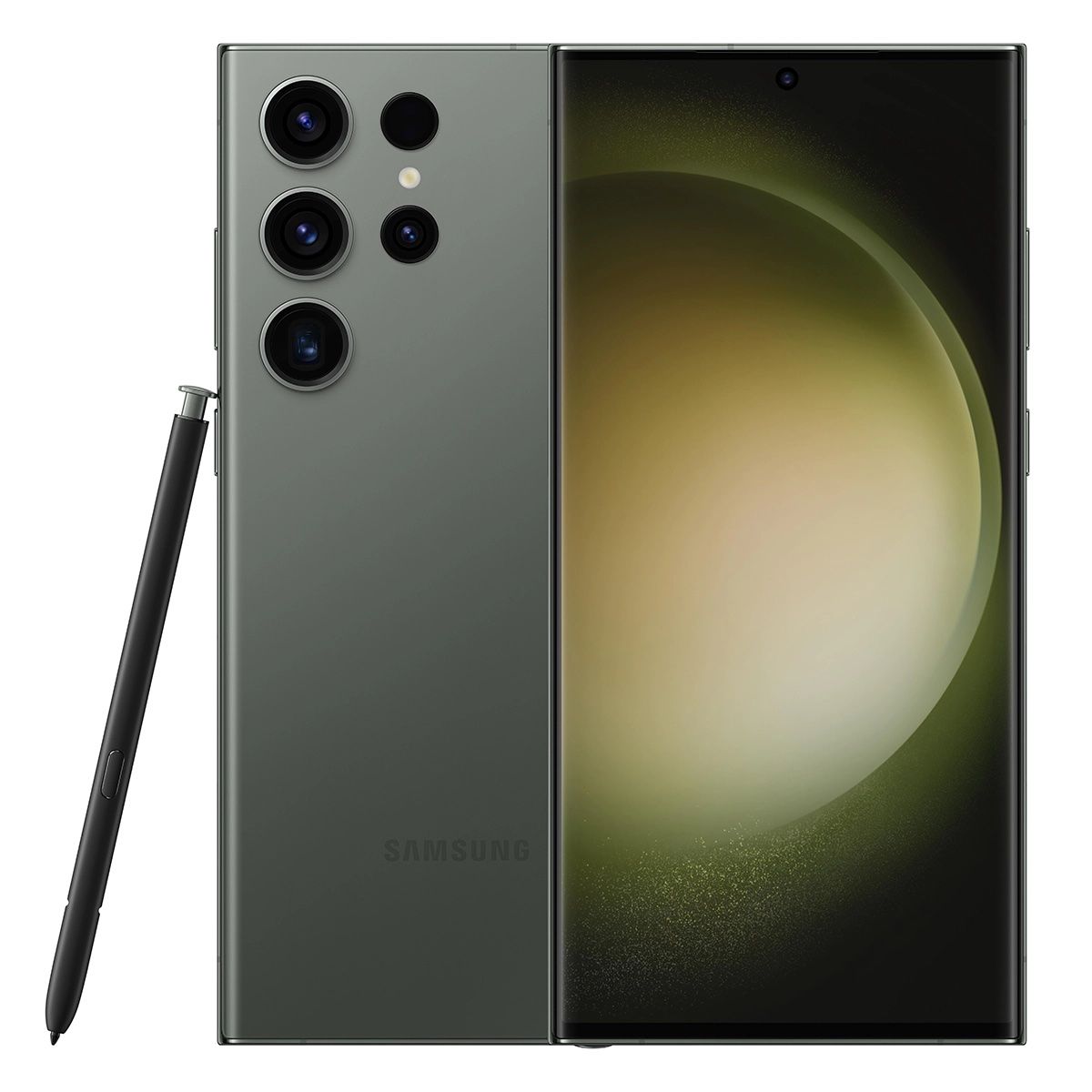
Samsung Galaxy S23 Ultra
A powerful phablet
The Galaxy S23 Ultra is the Note replacement you've been waiting for. Samsung's hardware is second to none, with the curves of this phone's display more comfortable for writing and typing than ever before. But it's the cameras where this phone really shines, centered around a 200MP sensor that can perform equally in light and dark settings. Just be prepared to pay for this premium experience.
- Best display in a smartphone
- Incredibly powerful
- Amazing camera array
- Very expensive
- Camera software has a few quirks
The Samsung Galaxy S23 Ultra looks like a small upgrade over the S22 Ultra on paper, but if you live outside the US, it's one of the most important phones Samsung has made in years. Previously, North America would get Snapdragon chips in their Galaxy devices while the rest of the world was stuck with slower, hotter, less efficient Exynos processors. That changed this year, with all S23 models getting a Snapdragon 8 Gen 2 for Galaxy worldwide. One of our UK-based writers screamed loud enough to wake up his family when this news broke, and regrets nothing.
Aside from the excellent 8 Gen 2, which is already one of the best chips we've ever seen in Android, the rest of the S23 Ultra is an absolute monster. The 6.8-inch Super AMOLED display can go up to 120Hz at 1440p and reach 1,750 nits of peak brightness in the sunlight. The S Pen also features, letting users take advantage of that massive display to draw, edit documents, and navigate with ease.
While the Pixel 8 Pro is our favorite camera phone, the flexibility of Samsung's cameras shouldn't be ignored. The 200MP primary sensor is capable of taking some incredible photos, whether it's pixel binning to 12MP, shooting in 50MP mode, or going all out with full 200MP shots. Sadly, shutter lag is still an issue. You can remove it now by disabling Samsung's scene recognition software, but then the photos lose some of their punch. Enabling or disabling the scene optimizer based on what you're shooting is the best way to go, but it's still overcomplicated compared to the ease of Pixel 8 Pro's cameras.
$1,200 is a lot of money for a phone, especially when that's just the starting price for the S23 Ultra. But Samsung's reputation for device support is stellar these days, and the Samsung of the TouchWiz days is nowhere to be found. The S23 Ultra will get four Android upgrades up to Android 17, with a fifth year of security patches, covering the phone to 2028. The price stops us from making this our main recommendation, but if you can afford $1,200 or get it on sale, this is the phone to beat.
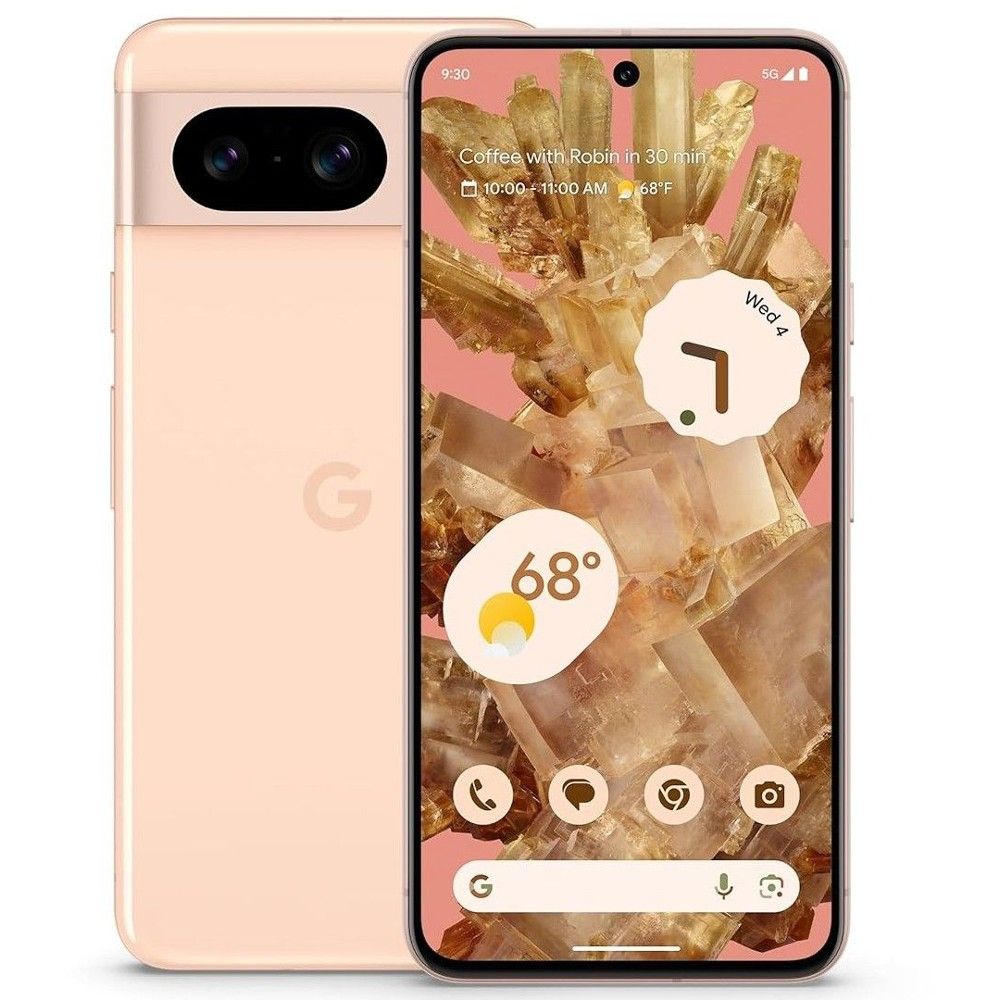
Google Pixel 8
A tiny, AI-powered assistant
Google shrank the size of its entry-level flagship for the second year in a row, and it's all the better for it. The Pixel 8 doesn't have every feature — hardware or otherwise — that you'll find on the Pixel 8 Pro, but it more than makes up for it with just how comfortable it feels in both your hand and your pocket. And with a main camera this good, you might not even notice the 5x lens is missing.
- Bright, fast display
- Excellent battery life
- Seven years of OS upgrades
- Arbitrarily limited software capabilities
- Some large bezels around the display
- Why no matte glass!
Prior to the launch of the Pixel 8, we had the Galaxy S23 pegged as our "compact" smartphone to get. And while Google's latest phone does pale compared to Samsung's in some crucial ways — in addition to not being the smallest, most compact device on this list — it wins out thanks to an affordable price point, a comfortable design, excellent cameras, and a killer software policy. At $700, this phone is more expensive than last year, but it makes up for it by packing everything in a tinier form factor.
Although the glossy finish first seen on previous Tensor-powered Pixels remains here, the new color options — including a pink so excellent, much of the AP staff chose it as their go-to hue — helps to hide fingerprints and smudges. With a brighter 120Hz display, this is the first year where it feels like the smaller phone isn't getting help back in the screen department. Likewise, while the ultrawide sensor is reused from last year (and you still won't find a telephoto sensor on this device), the main lens matches the unit on the more expensive Pro.
That said, not everything that makes the Pixel 8 Pro special trickles down to the Pixel 8. Some of the most impressive software tools on the Pro, including upcoming camera features like Zoom Enhance and Video Boost, won't make it to this device. The same goes for certain AI tools, like Google's upcoming Summaries feature paired with Recorder. If you want a smaller Pixel this year, you'll have to settle for a more limited software experience. To some, the trade-off in size — not to mention price — might be worth it. After all, you're still getting seven years of OS upgrades on this device.
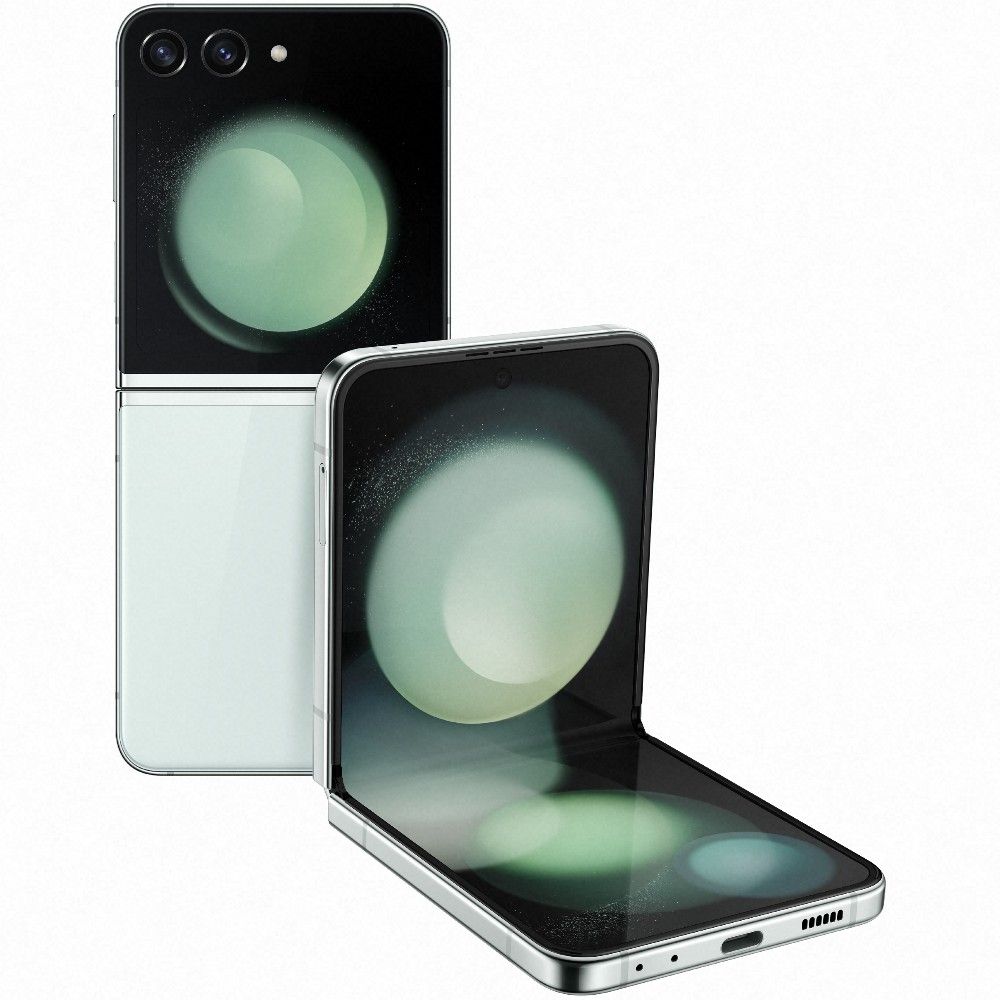
Samsung Galaxy Z Flip 5
Samsung takes the cake
Samsung's latest flip phone takes the concept to the next level. While keeping everything we loved about the Z Flip 4 around, the Z Flip 5 adds an expansive 3.4-inch front display loaded with widgets, apps, and more. It's like a smartwatch glued to the front of your phone. All of this, plus a thinner chassis that fits in your pocket better than ever.
- Flex Window is impressively useful
- Flatter design
- Pure fun in a smartphone
- No telephoto lens
- Battery life is fine, but charging is slow
- Flex Window app support can feel a little janky
The Motorola Razr+ set the new standard for cover screens — don't worry, we recommend that phone further down in this guide — but it's hard to argue with Samsung's success in this market. That success is earned thanks to the years of polish that has gone into both the hardware and software for the Galaxy Z Flip 5.
The hinge now folds completely flat, preventing dust from getting at your foldable screen when closed. But the real star of the show is the new 3.4-inch cover screen that finally takes this secondary display from gimmick to useful. It can preview notifications, show widgets, let you respond to messages with a full keyboard, and even run any app you like through Good Lock.
There are a couple of differences in how Samsung and Motorola approached their respective smartphones. Samsung's widgets are leaps and bounds better than what you'll find on the Razr+, while Motorola allows you to open apps by default without jumping through hoops to add third-party services. Even then, though, Samsung does show some serious design chops when compared to the Razr, especially in terms of build quality.
Honestly, it's up to you which clamshell device you prefer. While some might prefer the cleaner build of Android seen on the Motorola Razr+ it's hard to argue with the fit and polish here. Samsung has really mastered the art of crafting a modern clamshell phone. Now it just needs to figure out how to squeeze a telephoto lens into one.
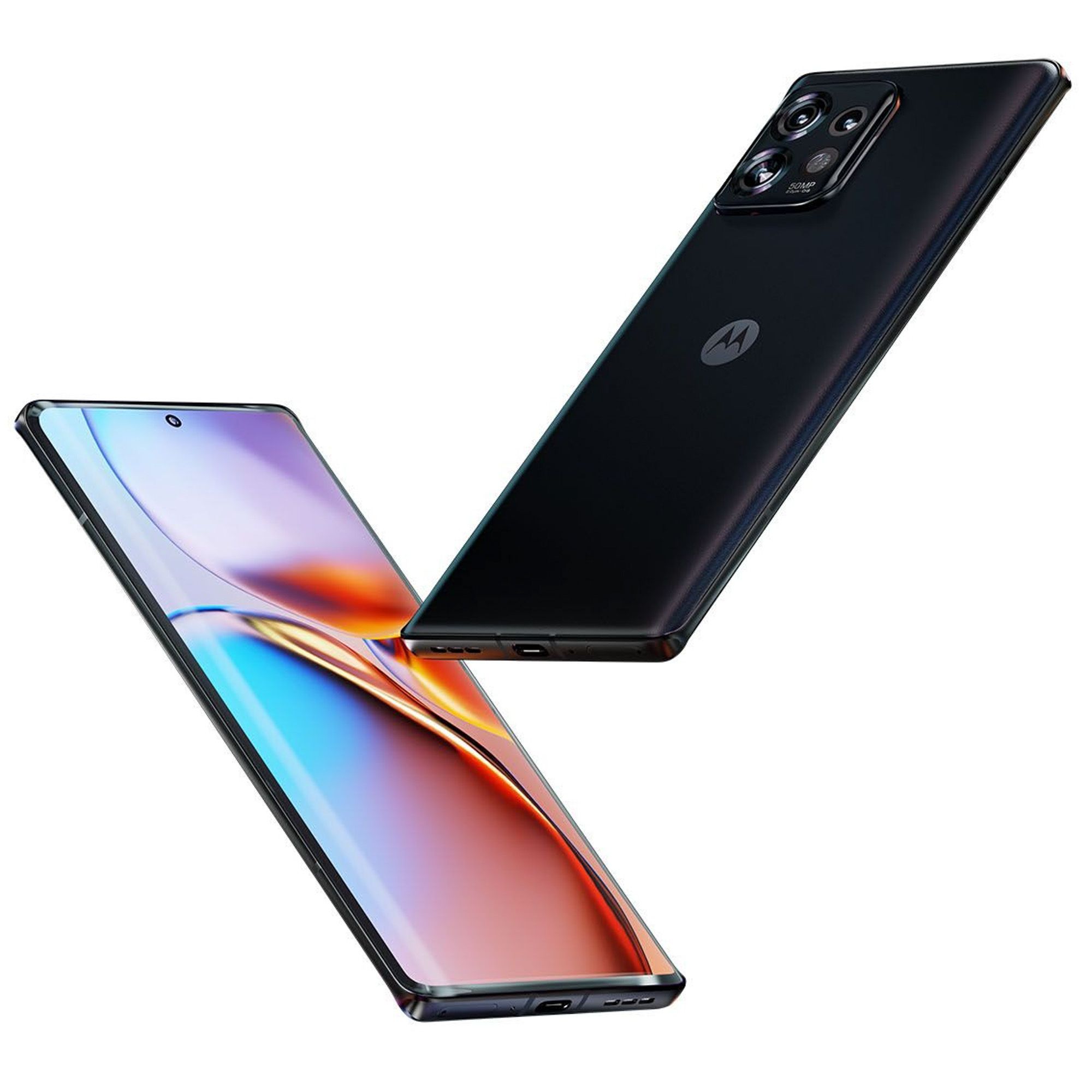
Moto Edge+ (2023)
A competent, affordable flagship
The Moto Edge+ is the perfect alternative for anyone looking to avoid the Samsung-Google duopoly of the Android market. With excellent performance, long-lasting battery life, and an affordable price point, there's not much to not like here.
- Total bargain for these specs
- Excellent mix of performance and efficiency
- Fast-wired charging with a brick in the box
- Slippery phone with curved edges and silky matte glass
- Motorola's skin can feel a little barebones
- Camera still can't quite compete with Google
Frankly, we're as surprised to see this year's Moto Edge + finding its way onto this list as you are. Previous flagship entries in the Edge series have ranged from absolutely average to disappointing at best, but with this year's phone, Motorola kind of crushed it.
But this entry is deserved, and we couldn't be happier to see Moto returning to form. This phone combines the killer efficiency of the Snapdragon 8 Gen 2 with a 5,100mAh battery, all while maintaining a thin build. Every edge of this chassis is curved, resulting in sleek device that feels so smooth in the hand. It won't be for everyone, but we like it, and people who don't will cover it with a case anyway.
But previous Motorola flagships have had performance on their side, so why does the Edge+ get special treatment? Because the rest of the phone keeps up. The camera system may still be behind Samsung and Google, but it's closer than ever and easily the best Moto has ever offered. Most importantly, Moto has finally revised its update policy so it will be supported for years to come. Combine the specs, stock-android software, and the 512GB with a $800 price, and you have a winning formula.
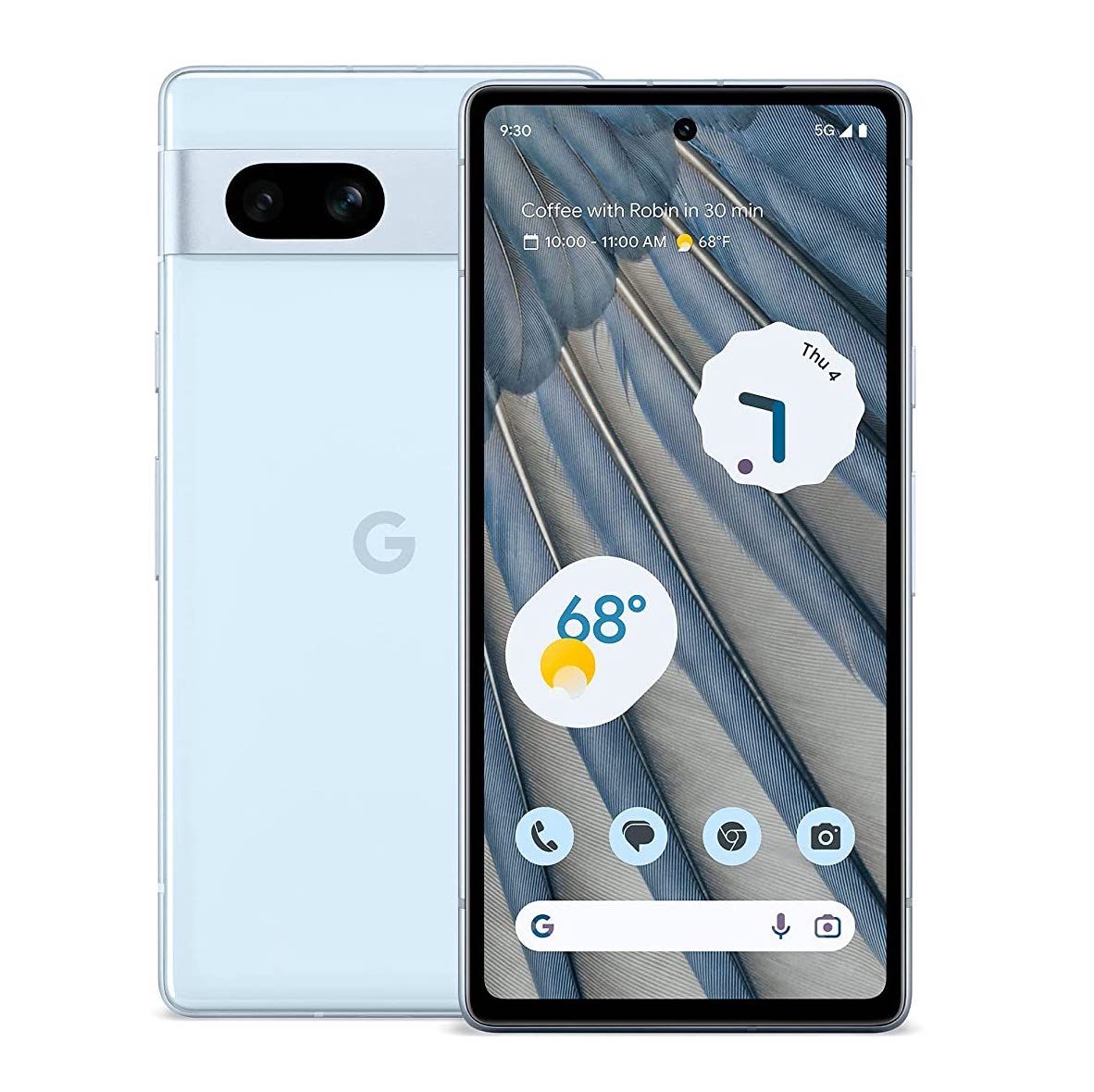
Google Pixel 7a
Google's new cheap winner
The Pixel 7a improves on its predecessor in nearly every way. From a larger camera sensor to wireless charging, a 90Hz display to a reinforced frame, there's very little difference remaining between this phone and the flagship Pixel 7. Unfortunately, its price tag is also higher than in previous years, placed just $100 less than Google's mainline smartphone.
- Best photos on a smartphone under $500, bar none
- New colors and a plastic back improve the Pixel 7's design
- New features like a 90Hz display and wireless charging
- Battery life is somewhere between disastrous and subpar
- Higher price than previous generations
- Slow charging speeds, especially wireless
Since the Pixel 3a debuted, mid-range phones have become hard to ignore, and the same can be said of the Pixel 7a. We already loved the 6a, but this upgrades everything to make the best Pixel A-series device yet. The display is finally 90Hz, wireless charging has made its appearance, and Tensor G2, the same chip from the flagship Pixels, has made its way down to this device.
Being a Pixel, this takes the best photos of anything in this price range, but it doesn't keep up with the mainline Pixel 7 (to say nothing of the Pixel 8). Likewise, the display is a step-down, even though they look similar on paper. Viewing angles aren't as good, especially when 90Hz is enabled, and wireless charging is limited to 5W, while the Pixel 8 can achieve 18W with an official charging stand. Battery life leaves a lot to be desired too, which most of our team struggling to get five hours of screen time.
If you're considering the Pixel 7a, keep in mind that the Pixel 7 and Pixel 6a remain good options as well. If you're looking to save some cash, the Pixel 6a delivers a good experience for just $350 — or less if you can find it on sale.
Meanwhile, the Pixel 7 is a slightly better version of the Pixel 7a, and in a post-Pixel 8 world, you can find it for well under $500. With that discount, it's totally worth grabbing Google's more expensive flagship phone. And yes, we're aware of how complicated the company's lineup is; it confuses us too.
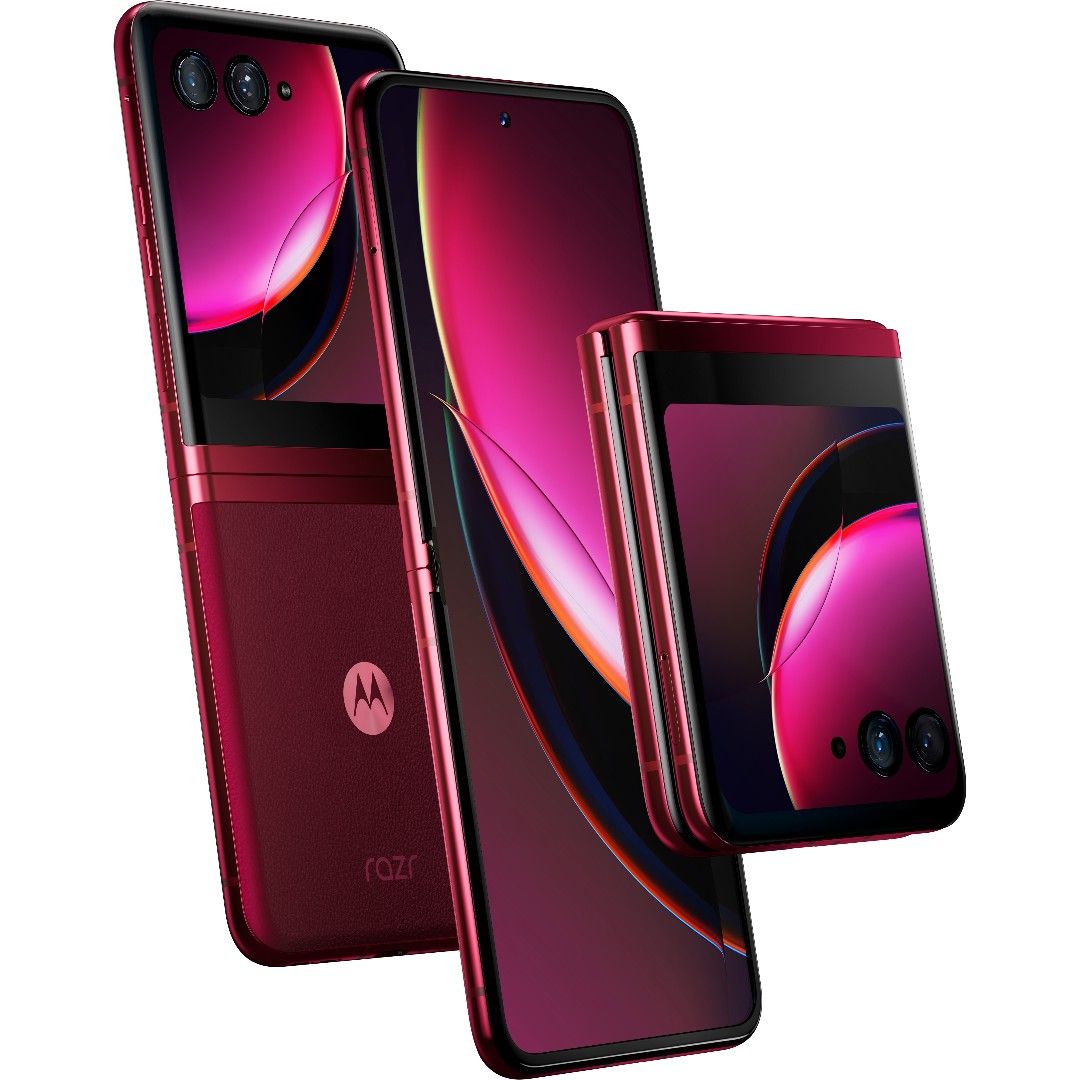
Motorola Razr+ (2023)
The best '00s nostalgia you can buy
The Motorola Razr+ is everything we've wanted from a clamshell foldable. The front screen is fun and functional, capable of everything from firing off emails to controlling music to playing games. Inside, you'll find a standard smartphone experience on a large 6.9" display. Throw in a relatively affordable price, and you're cooking with gas.
- Front screen is surprisingly capable
- Decent battery life for a small device
- Phones haven't been this fun in forever
- Motorola's software updates can take a while to roll out
- Cameras aren't great
- Faux leather on the magenta option won't be for everyone
Samsung has long held its crown as the foldable king, largely thanks to an absence of rivals in the US. And while Google stopped short of claiming the Galaxy Z Fold-series' crown, Motorola has had more luck on the clamshell side. The Motorola Razr+ is an exceptionally fun phone, and as long as you can deal with some inconsistent — and often mediocre — cameras, there's a lot to love here.
On the inside, you'll find a pretty typical Android experience. An ultra-tall 6.9" display looks and feels like your regular Motorola phone, right down to the twist and chop gestures for the camera and flashlight, respectively. It's the outside of the phone where the Razr+ really shines. That 3.6-inch, 1:1 display might sound small on paper, but it's surprisingly capable of accomplishing most everyday tasks. From sending a text to looking up directions, this screen makes it easy to keep your phone folded when you don't need it, all while saving on battery life in the process.
As with all foldables, the cameras are the big weak point here. Motorola has always struggled to keep up with the likes of Google and Samsung, and that's still true. They're not completely incapable, but you shouldn't expect anything amazing. Still, after taking a couple of years off, this latest Razr is an astounding achievement for Motorola. The Galaxy Z Flip 5 is a fascinating device — in some ways, far better than this one — but the phone that fits your life will really come down to personal taste.
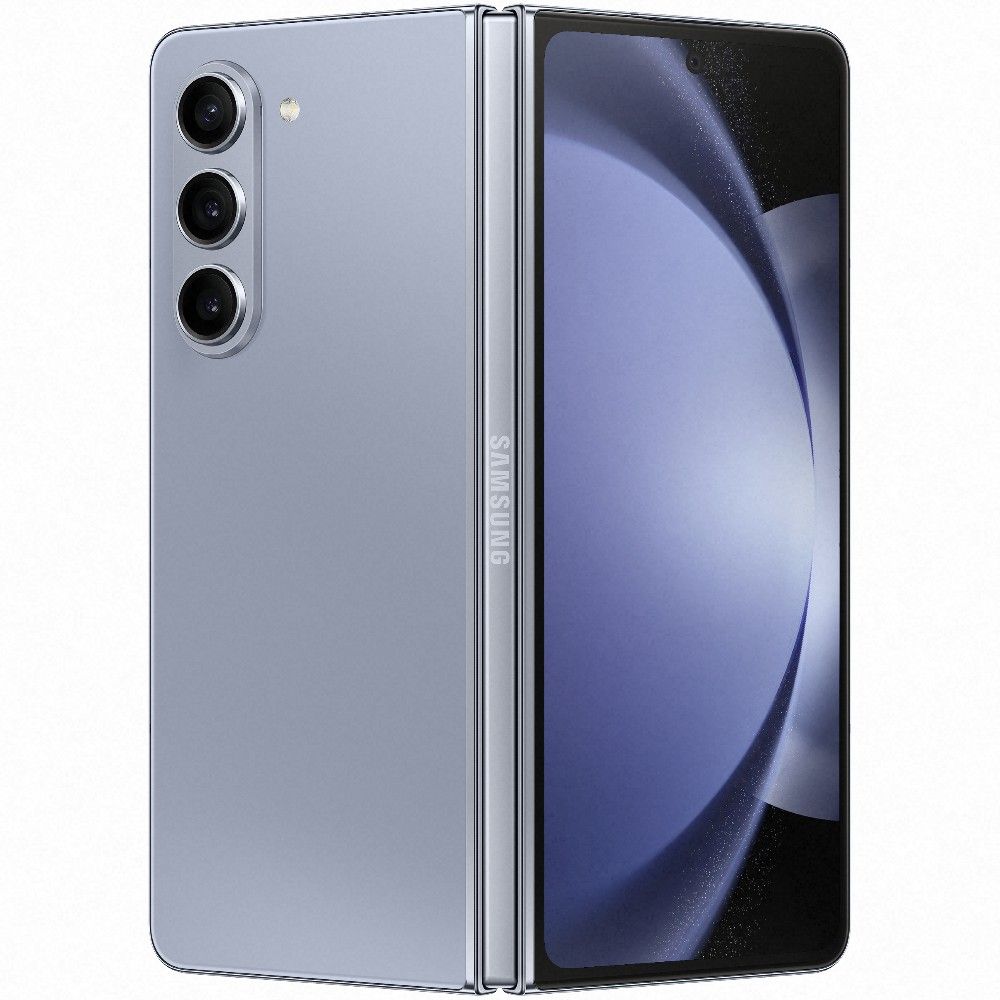
Samsung Galaxy Z Fold 5
Ultimate phone-and-tablet hybrid
The Galaxy Z Fold 5 might be a boring upgrade for anyone already converted to the foldable lifestyle, but if you're new to the club, this is the one to get. With a refined design and excellent big screen-ready software, the Z Fold 5 is another great foldable from Samsung. We're just hoping for something a little fresher next year.
- Slimmer, pocket-ready chassis
- Good battery life
- One UI remains great on foldables
- 25W charging feels so slow
- New features or changes are few and far between
- Same cameras as last year
The Galaxy Z Fold 5 might not feel as exciting as previous foldables, but what worked well last year still works well on Samsung's latest release. This year's big improvement is a new hinge that allows the entire phone to fold flat for a thinner, lighter chassis. It's a change you'll only notice if you're coming from an older Z-series phone — and, frankly, no one with a Z Fold 4 or even a Z Fold 3 in decent shape should upgrade — but it's a welcome improvement nonetheless.
Most of this phone is the same as last year's, and it all starts with the screens. You'll find the same external 6.2" display paired with an expansive 7.6" inner screen, perfect for productivity. As a bonus, this year's folding display is brighter than ever before, matching the output of the Galaxy S23 Ultra. You still have S Pen support, complete with a new case. And thanks to the Snapdragon 8 Gen 2, performance and efficiency are better than ever. Moreover, One UI feels designed from the ground up compared to the experience on the Pixel Fold.
You might expect such an iterative upgrade to come with a price cut, but Samsung has kept its foldable ultra-expensive. The Galaxy Z Fold 5 once again starts at $1,800 for the 256GB model, with prices only going up from there. While we expect (or maybe just hope for) a more exciting model in 2024, the Z Fold 5 proves Samsung has retained its foldable crown for a reason.
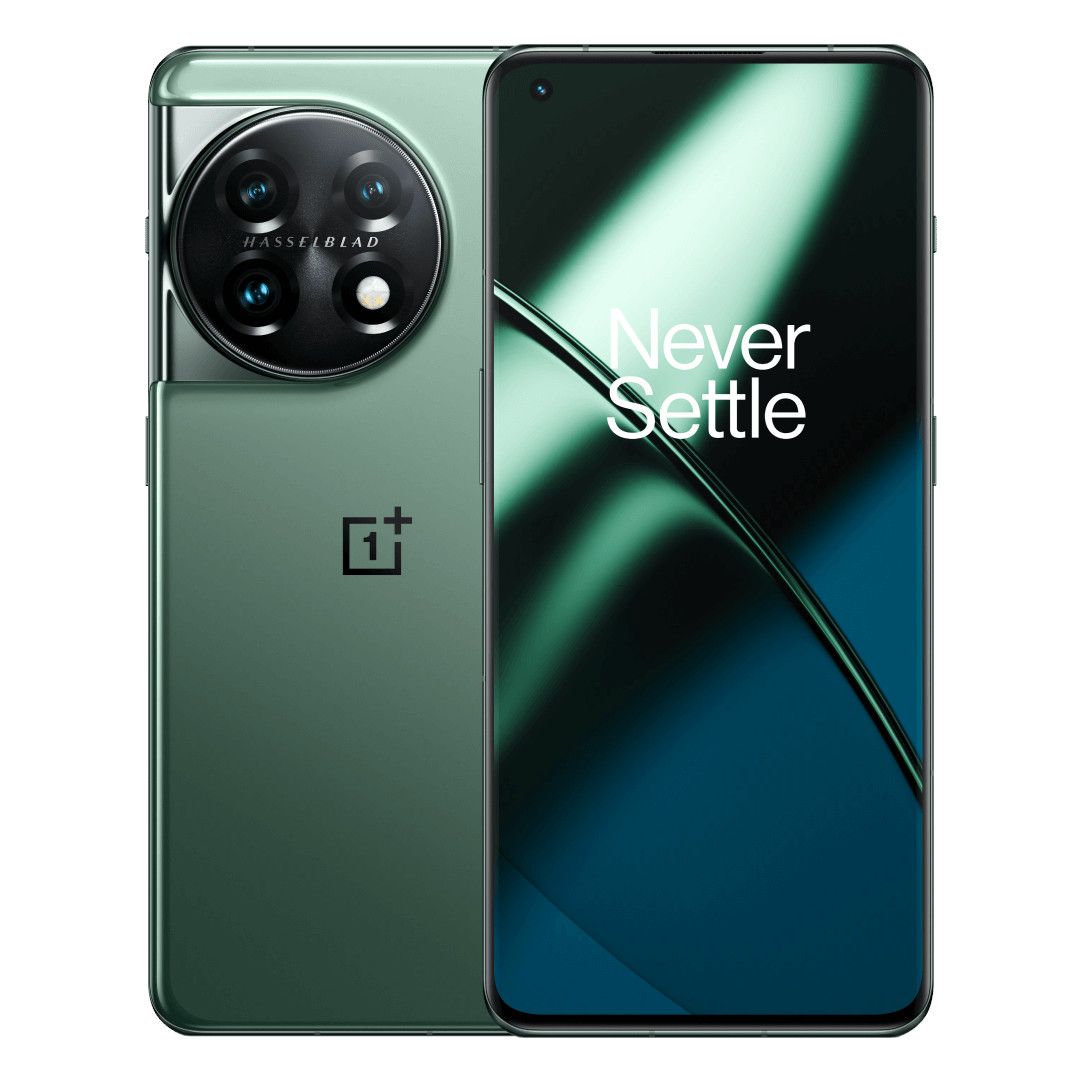
OnePlus 11
A return to form for OnePlus
The OnePlus 11 is a return to form for the company. It sports an excellent display, improved build quality back up to par with the original OnePlus 10 Pro, and the company's signature fast charging. Its camera system is also pretty solid, thanks in part to the Hasselblad color science returning for a third generation. Even the alert slider has made its grand comeback.
- Excellent battery life
- Ultra-fast charging speeds
- Excellent specs for the price
- No wireless charging
- OxygenOS 13 remains a pretty mixed bag
OnePlus is coming off a rough couple of years, but the OnePlus 11 is here to right the ship. This phone sports a high-res and ultra-fast display, perfect for movies and gaming. In addition, its build quality feels back up to par with the original OnePlus 10 Pro, even if its glossy green variant feels a bit too slippery in our hands. The Hasselblad color science is back for its third generation, and while the overall camera system isn't as impressive as the best you'll find from Google and Samsung, you can still score some pretty great shots. Even the alert slider has made its grand comeback.
The OnePlus 11's best feature, though, might be its battery. A massive 5,000mAh cell is good enough for two full days of use on a single charge, and with its bundled 80W charger — 100W outside the US — you can fully charge the phone in just about half an hour. And yes, the alert slider has made its grand comeback.
Granted, this phone isn't perfect. OxygenOS 13 is still a bit of a post-Oppo mess, a far cry from the days of completely clean builds. Meanwhile, its design is a little uninspired, combining a generic glass slab with a massive circular camera module. But for $700, it's a solid alternative to Samsung's Galaxy S23+, delivering a similar experience while keeping $300 in your pocket. Not too shabby, OnePlus.
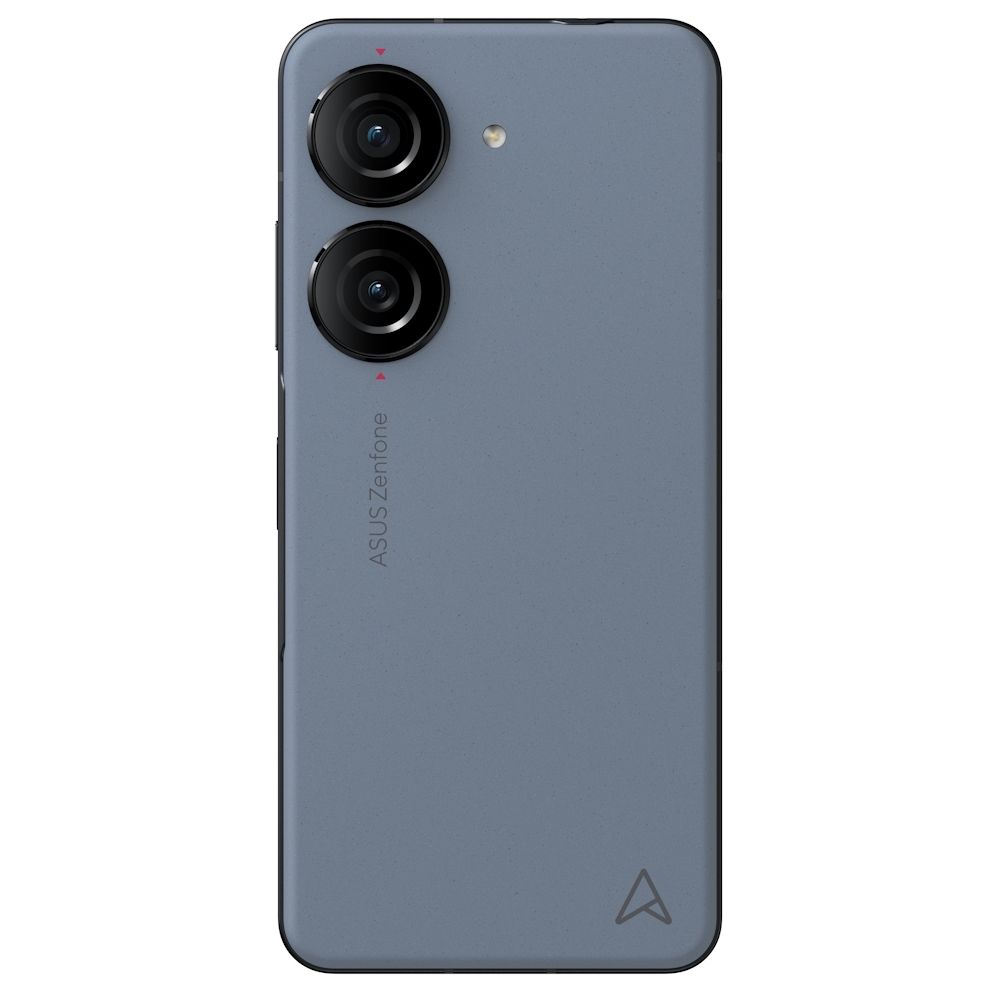
Asus Zenfone 10
A tiny enthusiast's dream
The Asus Zenfone 10 is the smallest smartphone you can buy today that still qualifies as a flagship. With a Snapdragon 8 Gen 2, this is one powerful little device, all packed in a chassis that slips in your pocket. Partnered with some surprisingly solid software and decent cameras, it's easy to imagine this as your daily driver — as long as your carrier supports it.
- Cute and adorable
- Sub-6-inch display
- Solid software performance
- Doesn't work on every US carrier
- Cameras don't hold up to other flagships
Asus might be best known in the mobile space for its ROG lineup of smartphones (and, most recently, portable gaming handhelds), but the Zenfone series remains the favorite of plenty of enthusiasts for one simple reason: portability. With 5.9-inch display, the Asus Zenfone 10 is one of the smallest smartphones you can buy today, but that's not to say it's limited in power. With a Snapdragon 8 Gen 2, this is a flagship device through and through,
The design really is the best thing about the Zenfone 10, and it's not just because it's small. The matte-coated back just looks adorable in person, and with plenty of colors to choose from, finding one that fits your style is easy. The software experience is also surprisingly decent, thanks to Asus's continued tradition of allowing its users to pick between its own theme and one closer to stock Android. It might not be quite up to par with Google's Pixel launcher or Samsung's One UI, but it has a lot in line with something like Motorola's usual software experience.
There are a couple of downsides to the Zenfone 10, of course — otherwise, it would be at the top of this list, wouldn't it? Generally speaking, buying Asus phones in the US can be pretty annoying. They're only available unlocked, and only work on AT&T and T-Mobile (plus their respective MVNOs) — no Verizon. It can also tend to come and go from Amazon, and that's after a months-long delay in the device actually launching in the US. The cameras are totally competent, but they aren't nearly as flexible or functional as the pros in this space. But all said, if you're looking for the smallest flagship around — even smaller than the Pixel 8 — this is the one for you.
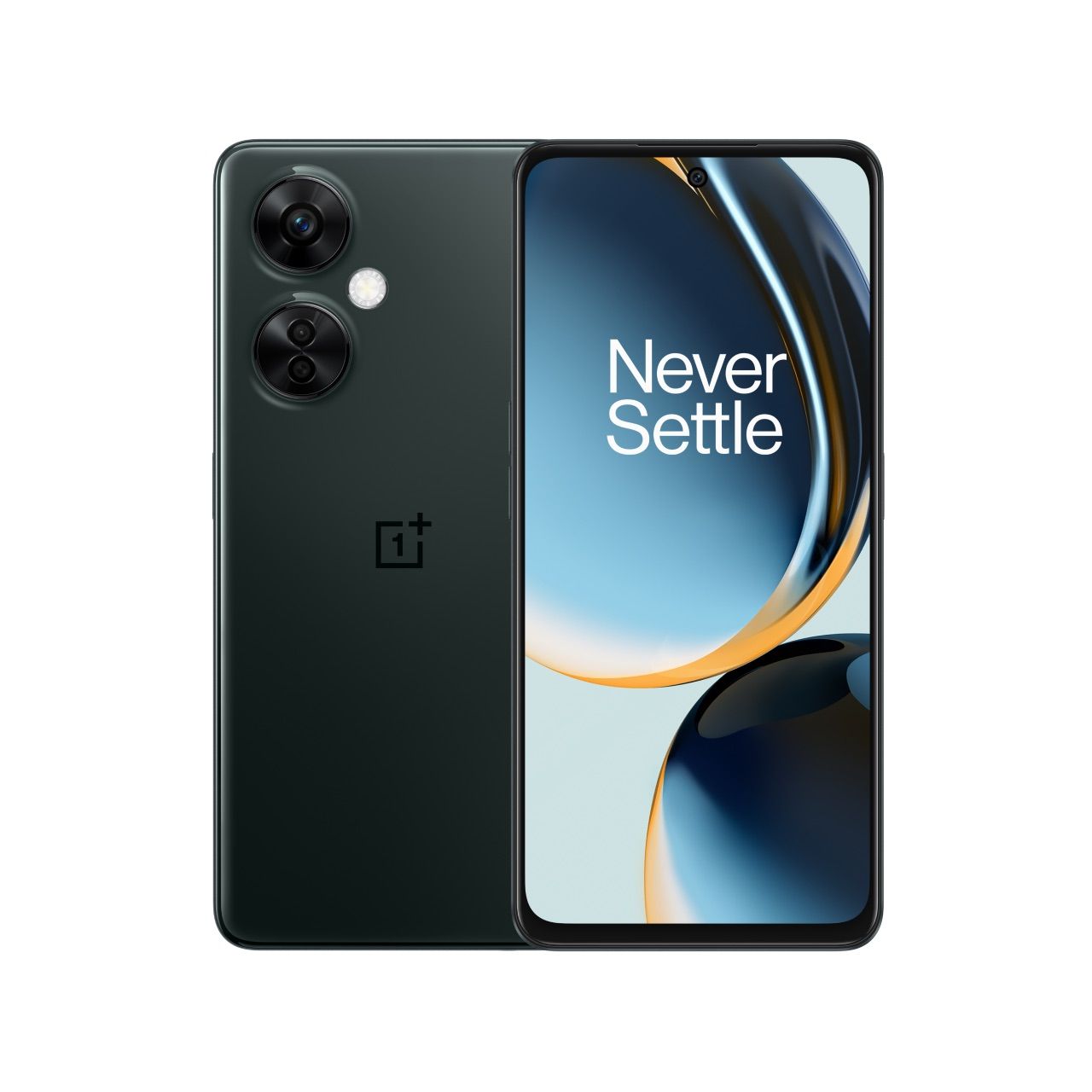
OnePlus Nord N30 5G
An affordable Pixel 7a alternative
Although it's not quite the replacement for the Nord N20 we envisioned, the OnePlus Nord N30 5G is a competent phone in its own right. With a faster display, solid battery life, and an affordable price, it's a solid offering — though we miss the AMOLED panel on the N20.
- New 90Hz refresh rate
- Solid battery life
- Fast-charging budget phone
- No AMOLED panel
- Build quality feels cheap
- Identical processor as the N20
We loved last year's Nord N20 5G, but OnePlus has decided to take the series in a new direction in 2023. The Nord N30 5G is more of a revision than a true successor, ditching some of our favorite elements of the N20 while improving others. The base design just isn't as unique looking, and the glossy plastic picks up plenty of scratches right out of the box. The display has been boosted to 90Hz, but at the same time, a swap from AMOLED to LCD means you won't see an always-on display here. And even the specs haven't seen much improvement, with the same Snapdragon 695 chip still employed.
So while it's not quite the knockout hit that the Nord N20 was last year, it's still a competent, affordable device. Battery life is excellent, for example, and fast charging is a rarity in this price range. If you can get over the shortcomings on display here, the Nord N30 5G is a solid budget buy. Still, if you find an N20 in stock, you might be better off with that phone. Alternatively, you can also check out the Nord N300 5G. It's not quite as sleek or powerful as this phone, but it's a bit cheaper, making for a good alternative if you're on T-Mobile.
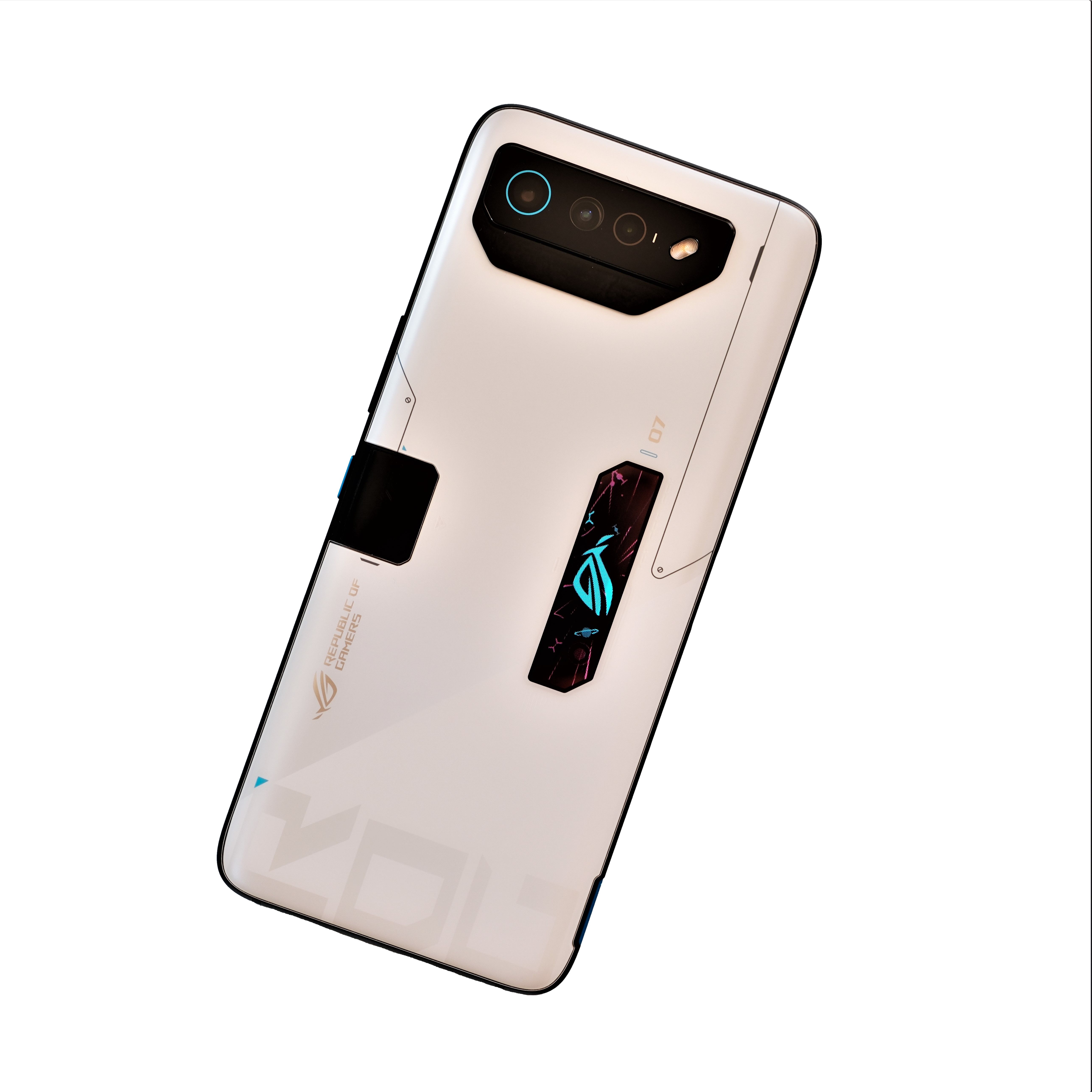
Asus ROG Phone 7 Ultimate
Absolute maximum power
If you're looking for the best gaming experience on Android, this is it. Packing all of the power you could want, the Asus ROG Phone 7 Ultimate includes every gamer's need to get the most out of their favorite titles, right down to two USB-C ports. It's a big, expensive phone — but for many, that's exactly what the doctor ordered.
- Large, fast display
- Huge battery
- All the specs you could want
- Display might be a little too large for some
- Expensive
- No headphone jack
The Asus ROG Phone 7 Ultimate has dethroned its predecessor as one of the best gaming phones around, especially now that it's available in the US. Like the ROG Phone 6, this device is an absolute monster, with a top-of-the-line Snapdragon 8 Gen 2 chipset, a massive 6.78", 1080p, 165Hz display, and a 6,000mAh battery guaranteed to deliver multiple days of use on a single charge. However, you're paying for the benefit of something like this; it starts at $1,300.
Still, our review found that there's very little missing from the ROG Phone 7 Ultimate, so long as you can deal with a couple of shortcomings. For one, it's bulky, big, and heavy. That comes with the territory, but not everyone is going to be comfortable using this phone. The cameras are exactly what you'd expect — this isn't a phone for photographers, so on-the-go gamers might need to keep some cash aside for a dedicated camera if it's another one of their passions. And, just to double down, it's an expensive phone, coming close to foldable territory in terms of pricing. If you can stomach all of that, though, this is as close to old-school Android phones as you'll find these days. All power, no compromise.
What are the most important things to look for in an Android phone?
It's easy to get overwhelmed by all the specifications and features thrown around in a phone's product listing or reviews. 100x zoom cameras, ultrasonic fingerprint sensors, S Pen stylus support, UWB, and the list goes ever on, but what do you actually need, and what’s just icing on the proverbial cake? There are four key features you should look at in a new phone — after you decide on your budget, of course.
- Camera
- Screen
- Battery
- Software & updates
While the camera might not be the most important feature for some buyers, it’s a good indicator of overall speed, performance, and quality. For example, if a review mentions that the camera takes too long to open or too long between shots when snapping multiple photos in succession, that’s a hint that the phone’s long-term performance might be more sluggish than what initial reviews indicate.
Most phones today come with screens in the 6.4 to 6.8-inch range, though aspect ratio certainly plays a role in how wide/narrow/tall/short a phone ends up feeling in your hand. If you prefer more petite devices, be prepared for a difficult search if you want to go smaller than the 6.1-inch Samsung Galaxy S23. There are three other screen features to consider: curved screens, high refresh rates and maximum brightness. Curved screens can look lovely, but it’s often harder for tempered glass screen protectors to fit on them — and they can also be harder to grip without accidental touches.
When it comes to refresh rates, meanwhile, the higher the better. 60Hz is the classic rate, but 90Hz and 120Hz are becoming much more common, even among mid-range and budget phones like the Samsung Galaxy A14. You'll get a smoother experience with a high-refresh rate display, but often at the cost of battery life. Finally, make sure you pay attention to your phone's screen brightness if you spend time outdoors. If a screen doesn’t get very bright, it’ll be hard to read outside. You don’t necessarily need a screen that can reach 1,750 nits like the S23 Ultra, but 800 nits is a nice goal if you need to reliably, regularly use your phone outside in full sun.
The brighter your screen, the more power it consumes. However, battery is more than just a number on a spec sheet; be sure to read the reviews and see how that battery fares in actual use in reviews. While a good power bank or a fast phone charger can somewhat offset a smaller battery, nothing can replace getting a phone with a proper battery life from the start.
And of course, when it comes to software, you'll want to look for features you care about crossed with a reliable update schedule. Some users can’t stand how One UI behaves towards most third-party launchers or how over-stuffed Samsung’s apps and features are, flocking instead to the Pixel 8 series and its cleaner design. Others prefer how flexible One UI can be compared to the competition, especially with add-ons like Good lock.
When looking at a phone’s promised updates, it’s important to remember a few things. Platform updates are updates to the features and Android level of your phone; the Galaxy S23 series will receive four generations of Android version updates after its launch with five total years of security patches, while the Pixel 8 series will get seven years of OS upgrades full stop.
What's the best Android phone you can buy?
The brilliance of Android is that, no matter what you want in a smartphone, there's something for you. Still, we think that the best overall device for everyone is the Pixel 8 Pro. Yes, its $1,000 price tag is mighty expensive. But considering everything it can do — and everything Google is planning on adding in future updates — it's one heck of a phone. And factor in that it'll last you up to seven years while still receive software upgrades, and we can't really think of any other option that could beat it.
Of course, foldable fans may want to opt for something from Samsung or Motorola. Anyone craving a small phone may shift their eyes to Asus and its latest Zenfone. And we can't forget about OnePlus — it still holds the hearts of plenty of enthusiasts. The good news, no matter what you pick, is that Android has more choices — and more good choices — than ever before.

Google Pixel 8 Pro
The Google Pixel 8 Pro is the company's latest flagship, boasting a new Tensor G3 chip, a brigher screen, and a new camera array capable of capturing even more light. As usual, the real power lies in Google's Tensor chip, which offers even more photo enhancement and image editing features.

